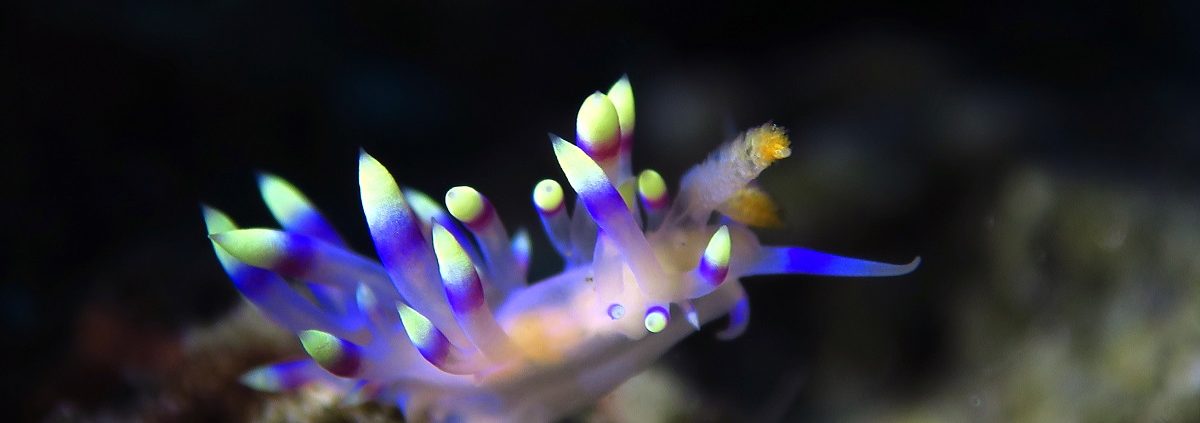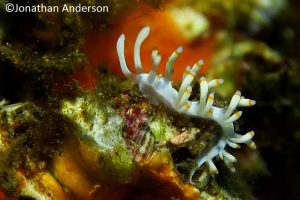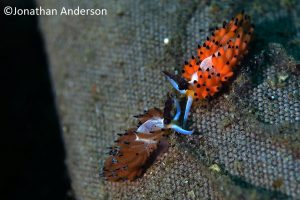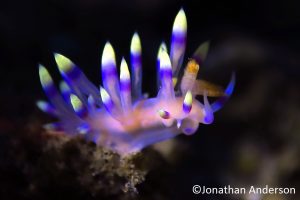15. Aeolids – Slugs with a sting in the tail
An old and not-often-visited site of ours, Ducomi, is sometimes crawling with specimens of a rather special kind of slug family, the AEOLIDS. So called because their many thin lobes, or cerata, act as external lungs just like the DORIDS, but these nudibranchs have a rather unique defence mechanism. Read on…
Bicolor Flabellina (Flabellina bicolor)
Flabellinas love to hang out in a particular sponge that looks exactly as they do, so we were lucky to see this little guy (less than 10mm long) trying to hang on to a rock in a stiff current. The two longer white appendages at the front (the left of the picture) are its Rhinopores, (sensors), whilst the rest of the appendages are cerata (its breathing apparatus). The white tips of the cerata are not just for show – most Flabellinas are able to absorb whole and intact the nematocysts from their food sources and store them on the tips. Nematocysts are the stinging mechanisms in fire corals, jellyfish and fire sponges. So in effect, they are disarming their prey and stealing their weapons to defend themselves against other predators. How very sneaky.
Ringed Favorinus (Favorinus tsurganus)
The dive site where these little chaps were found is not a classic coral garden. It’s a sandy area prone to currents bringing in any assorted rubbish from miles around. It does not seem to bother the marine life though, as these two Favorinus aeolids show, gliding about on a pair of discarded trousers. They’ll go anywhere so long as there’s a good meal in it for them. We all know someone like that.
Desirable Flabellina (Flabellina exoptata)
It’s hard to think of a more apt name for this little beauty. This one was about 10mm long, and was happily scavenging in the muck, its characteristic orange feathered rhinopores sweeping the area for its favourite stinging hydroids. Takes all sorts, we guess.







Leave a Reply
Want to join the discussion?Feel free to contribute!